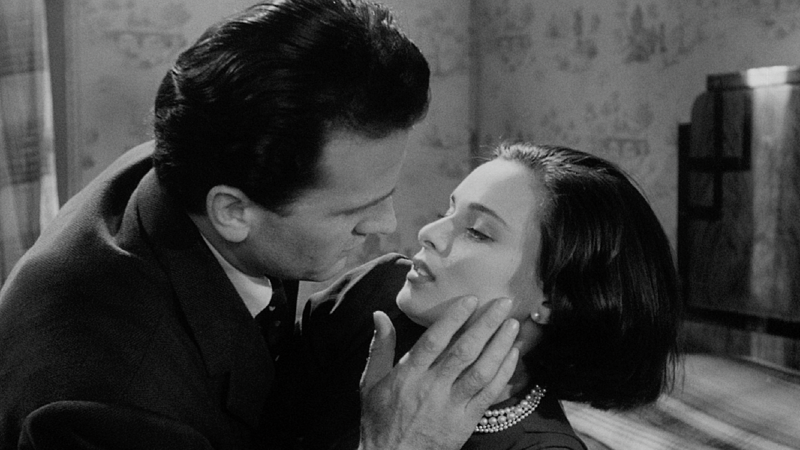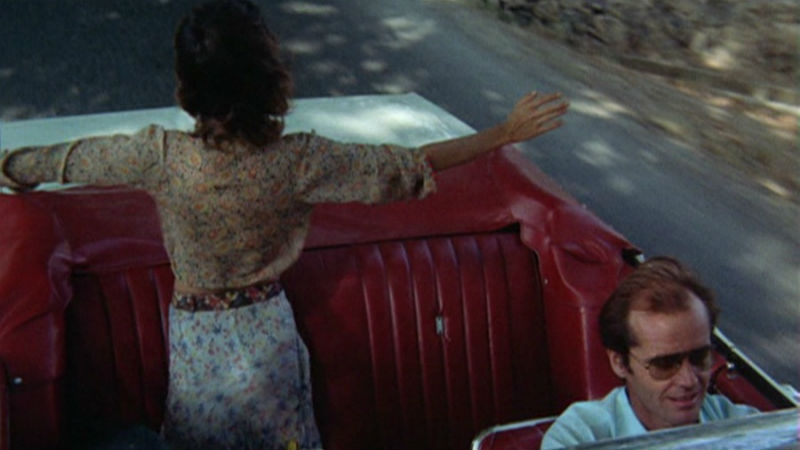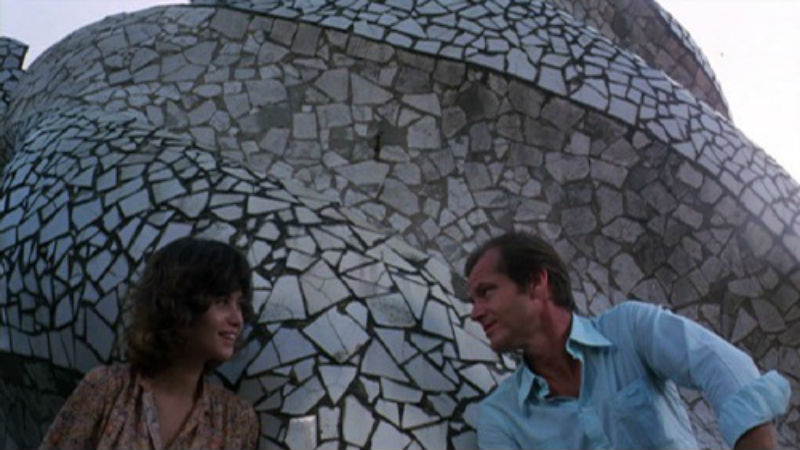Pioneering the visual realisation of modern middle-class alienation, loneliness and existential crisis, Michelangelo Antonioni’s legacy traverses the contemporary cinematic landscape on the triumph of stifling environments and hidden emotions.
“I’m not against the modern world. For me, this industrial environment symbolises progress. One can’t really be against progress. In any case, there’d be no point.” In his interview for Red Desert (1964) as part of the French television series Les Écrans de la Ville in November of the same year, Italian director and progressive film language pioneer Michelangelo Antonioni negated taking a stand on societal issues. “There is something inexorable about progress. It’s like revolution. Some people suffer horribly, but some adapt.”
Adapting to rapid changes within society may be as challenging as in 1964. But in our day and age, taking a stance through a movie has become an expected norm. Calling upon modern-day society through a meta-level is an art form many try, and few achieve well. But then there were those, like Antonioni, who longed to create something universal, a truth that sheds the constraints of a particular localisation.
.
It’s lonely inside
Antonioni may have been successful in the business for a decade earlier, starting in 1950, but he is best known for his work from 1960 onwards. Switching from conventional Italian cinema, Antonioni set out to capture internal isolation and a personal existential crisis. The artist applied broad paint strokes to many of his movie canvases, albeit with different set-ups. Ironically, Red Desert often strays from such purpose. It doesn’t solemnly take a look on the inside of its characters, but also alludes to the political and societal environment.
While preparing for the movie, Antonioni had visited workers in the area of his chosen setting, the city of Ravenna. In the early ‘60s, the area and its harbour were undergoing an industrial transformation. Some aspects of Red Desert are deeply rooted in such era. The protagonist’s feelings of despair and isolation, however, are born out of the everlasting challenge of a fast-changing environment and one’s inability to adapt.
Blow-Up [1966] is perhaps Antonioni’s best-known film, while The Passenger (1975) had the star power of Jack Nicholson. Yet such narrative techniques are more thoroughly deployed in the “Trilogy of Alienation”: The Adventure (1960), The Night (1961) and The Eclipse (1962), which he shot with his then muse and lover Monica Vitti. The first movie caused an uproar at the Cannes Film Festival. Especially, since Antonioni’s previous piece The Cry (1957) had been more straightforward and appreciated by the masses. But ultimately, the movie took home the second most important award, the Jury Prize.
.
Emotions are timeless
The Adventure has aged well. The way Antonioni depicted his lost souls on their quest for an elusive “something” still resonates six decades later. This elevates Antonioni, even though at his time considered less influential than his contemporary Ingmar Bergman, to an eternal film poet. Instead of following the mantra of post-war Italian Neorealism and showing the external alienation of people, Antonioni looked at the inside. The tools he developed are his legacy to cinema and the filmmakers that followed him.
Antonioni renounces following a more traditional timeline, filling his frames with dead time, long observational takes, and repetitive daily tasks. Instead of showing, he only gives glimpses and approximations on what his characters are thinking and feeling. The Adventure follows a young middle-class woman, who is confronted with the disappearance of her best friend during a boat trip, the disinterest of her fiancée and his sudden advances towards her. But not only are his intentions unclear, but hers also begin to shift the longer the two spend time together. In The Night, the story of a married couple unfolds throughout one afternoon and one night. And with it, the despair of realising one does not feel for the other anymore. In The Eclipse two young people undergo a whirlwind superficial romance that burns and flares out with the short-lived intensity of the name-giving eclipse.
Emotions in Antonioni’s movies come at a price. At the film festival in Cannes, he spoke of a “disease of emotions.” Humanity would think of them as an ancient element, something that must be overcome. To visualise this void, he used long takes, focusing his camera on prominent modern architecture, and letting his characters get swallowed by the wide establishing shots of unforgiving, waste landscapes. For Red Desert he used the sound design of the machines and artificial colours in order to convey emotional distance. Colours, he emphasised, serve the story – they add something that isn’t there.
Both The Adventure and The Eclipse prominently feature construction sites around Rome. The Night opens on a ride down the Pirelli skyscraper in Milan, exposing an ever-growing homogeneous city. These industrial centres with their sharp and angular construction intercept the flow of the story, overwhelm the composition of the frame and provide an alien backdrop for the characters. Contrasting these with old, often decaying architecture creates an outlet for seeking something that is lost. When Lidia (Jeanne Moreau) walks around her old neighbourhood in The Night, she feels a longing for happier times in the past, ingrained into these buildings – a sentiment not shared by her estranged husband Giovanni (Marcello Mastroianni). The paint she crumbles off a wall while waiting for him acquires an extra significance. It reflects the emotional core of the movie.
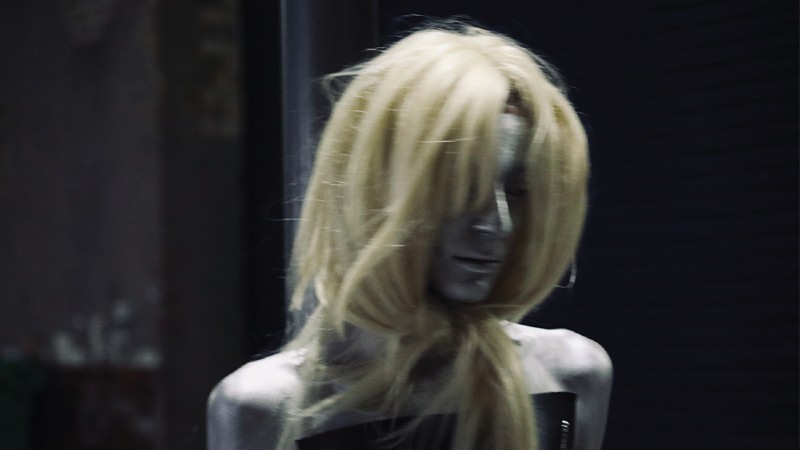
.
Lonely hearts, averted gazes
Antonioni also tends to pack or keep the cities devoid of people, depending on what emotion he needs to convey. When Vittoria (Vitti) comes to meet her mother and Piero (Alain Delon) at the stock exchange in The Eclipse, she gets lost in the bustling streets, with screams and traffic noises overwhelming the senses. At the end of the movie, as she and Piero fail to meet each other again at their common spot, the scenic composition at first suggests a crushing void. That is, until Antonioni and his trusted cameraman Gianni Di Venanzo start filling the streets with inhabitants and objects, building up into a seven-minute crescendo of visuals and sounds. An orchestra of life that goes on in the vacuum of a failed romance.
Antonioni arranges the frames in a way that conveys a sense of control and confinement. His characters are constantly engulfed by both physical and emotional barriers. Whatever lies beyond these barriers is a promise of an undefined freedom that can never be obtained. Walls become a physical barrier against which his female protagonists crouch while unleashing some of their rare emotional moments. In these instances, the camera dares to come closer to its subject, abandoning its carefully maintained distance. Antonioni barely deploys the classical “shot-reverse-shot” principle. When his protagonists talk, they hardly look at one another. With one face always turned away from the camera, one can only guess what the character is feeling.
Carefully arranged objects and bodies tend to carry meaning as well, such as when Lidia moves her arm closer to her husband during a nightclub visit, seemingly seeking affection. In the opening of The Eclipse, Vittoria arranges table decorations within a picture frame standing on the table, while her soon-to-be ex-fiancé Riccardo is being swallowed up by the books and clutter around him. Antonioni also uses the reflection of windows and glass doors to make his characters appear as a mirrored silhouette, translucent ghosts trapped in the very same constraining frames. Even when Vittoria and Piero exchange their first kiss, it happens through the glass door of a cabinet, emphasising the emotional distance which their relationship is built upon.
.
Emotional landscapes
Landscapes are recurring visual cues in Antonioni’s films. In his long takes and wide angles, the filmmaker observes the characters wandering and getting lost in nature’s most beautiful but also desolate spots. In The Adventure, the first half of the movie takes place on an island off the coast of Sicily. As Claudia (Vitti) and Sandro (Gabriele Ferzetti) search for Anna, the rocky landscape with its scarce shrubbery seems like an invisible force working against them. Similarly in The Eclipse, the mix of modernist architecture and bleak, endless fields and roads in Vittoria’s neighbourhood swallows up any human presence.
Antonioni pushes these stylistic choices even further in his first colour film Red Desert. The harbour of Ravenna and its industrial sector are staged as a mythical apocalyptic world. Antonioni instructed his crew to paint houses and trees in order to create certain moods. Many scenes within the film are engulfed by a dense fog that seems as arresting as the neurotic breakdowns of protagonist Giuliana [Vitti]. She, on the other hand, sticks out. The bleak and dirty industrial landscape, with its hissing and flouting sounds, is contrasted by the rich colours she dresses in.
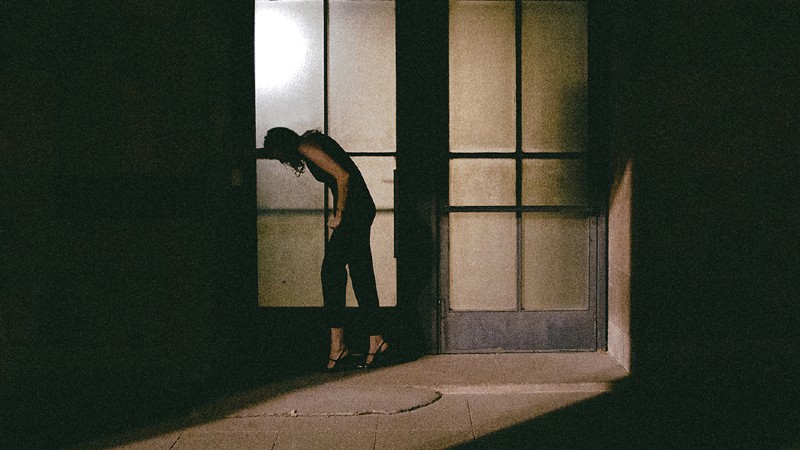
.
Antonioni beyond Antonioni
Antonioni’s poetry has endured the test of time. The Italian filmmaker has permanently left his print in the history of film. From Hollywood to Turkey, from Britain to Hong Kong, the auteur’s lyricism is everywhere to be sensed and to be seen. Even where landscapes are empty and emotions are concealed.
While the old master never actively pursued a career across the Atlantic in Hollywood, his style has influenced some of its most talented and prominent auteurs. In emancipating herself from her father’s shadow, Sofia Coppola has become a household name in directing movies about lonely, alienated characters drifting through life, most prominently in Lost in Translation (2003) or Somewhere (2010).
While Coppola focused her lens on the flashing lights and deep architectural canyons of metropolitan cities, Argentinian director Lisandro Alonso evoked his cues of alienation in a more untouched part of the world. His film language makes use of some of Antonioni’s employment of colour. The landscape in 2014’s Jauja enhances its natural ambience, intensifies its hues and gives an otherworldly feel to the story of a man searching for his lost daughter in the colonial-era Argentinian wilderness.
In contrast to the alienation in the open spaces of Tokyo, Los Angeles or Argentina’s raw landscape, Krzysztof Kieslowski focused more on confined space alienation, while creating parallels to other Antonioni’s visual techniques. Three Colours: Blue (1993) used a slow-paced rhythm with little to no narrative. Interweaving the colour blue in clothes and memorabilia of the protagonist’s dead family, the Polish director made use of dead time and repetitive daily tasks.
Wong Kar Wai’s In the Mood for Love [2001], a story about an unfaithful relationship, is equally slow-paced, with an inbuilt elliptical repetition. Abbas Kiarostami’s Taste of Cherry (1998), which caused a stir at Cannes [just like The Adventure], places its characters in an empty, seemingly lifeless environment for nearly the entire film. Emotions are not reflected within the characters, but instead in their surroundings. Kelly Reichardt, Lav Diaz, Tsai Ming-Liang, Andrey Zvyagintsev, Asghar Farhadi and Apichatpong Weerasethakul also employ similar techniques.
Employing Antonioni’s visual techniques does not only make for good inspiration. Almost 50 years after he won the Palme d’Or for Blow-up, Turkish director Nuri Bilge Ceylan collected the award in 2014 for Winter Sleep. He infused both the Anatolian landscape and the characters with loneliness and alienation.
Joanna Hogg took a note from Antonioni’s focus on the self-centred, financially well-situated middle class. Exhibition (2013) mirrors both The Eclipse and Red Desert. Set in a modernist townhouse in London, it tells the story of a bourgeois middle-aged couple, on course for an inevitable divorce, seeking to sell their property. Emotions manifest themselves visually throughout the house. Similar to Antonioni, there is reflecting glass and the arresting nature of cold, hard structures. Hogg observes the ongoing struggle between the protagonists from a distance, peeling off layer by layer of the couple’s dynamic.
Antonioni has also left his mark on mainstream cinema. In naming Antonioni as a source of inspiration, the Russo brothers, Anthony and Joe, have tried to inject his film grammar into their crowd-pleaser Avengers: Endgame (2019). Referring to him as one of their favourite directors in an interview with Indiewire in 2019, they placed alienated and distressed characters in environments that reflect their emotions.
Michelangelo Antonioni captured a moment in time, an upheaval in society, the industrial world and filmmaking. The director caught lightning in a bottle: he created a language to express a profound sense of alienation in an increasingly elusive world. His visual grammar for lost and estranged souls became universal. He laid the groundwork for many filmmakers to follow. The outset of this alienation may change with each new generation. The visual experience, however, never fails to engage.
.
The picture at the top of this article is from ‘Red Desert’, the other two are from the third edition of Doesn’t Exist, a non-tribute to Michelangelo Antonioni









